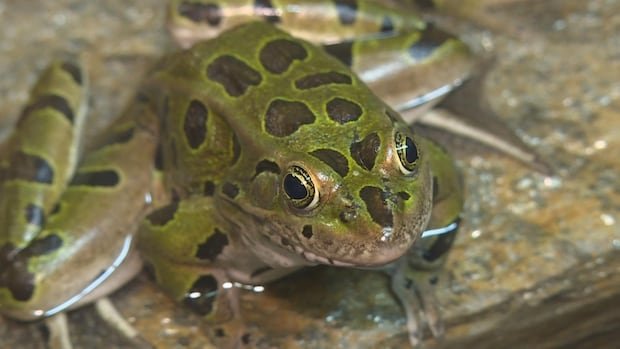Alberta’s endangered northern leopard frog species is experiencing a resurgence, thanks to successful provincial initiatives. The Government of Alberta reports that efforts to boost the population have led to the establishment of new self-sustaining frog communities. Once a common sight in the province, the northern leopard frog faced a decline starting in the 1970s and 1980s, prompting conservation actions.
Brett Boukall, a wildlife biologist specializing in at-risk species, highlighted the success of reintroduction strategies involving relocating frogs or releasing eggs into new areas to create viable populations. Notably, efforts at Battle River, Kinbrook Island Provincial Park, Beauvais Lake Provincial Park, Grainger, and Wyndham-Carseland Provincial Park have resulted in confirmed self-sustaining frog populations.
Translocating eggs has proven effective in establishing new northern leopard frog populations across their former range. The province’s current success, combined with existing frog populations, suggests no immediate need for further introductions. Over the years, a significant number of tadpoles were introduced as part of the translocation program, contributing to the recovery of the species.
The cause of the northern leopard frog’s decline remains uncertain, with various factors such as pesticides, habitat destruction, disease, and changes in habitat composition potentially playing a role. Despite challenges, the province’s reintroduction program benefits from suitable habitats within the frog’s historical range. Essential elements for successful frog populations include breeding, overwintering, and terrestrial habitats for feeding.
Alberta is home to a variety of frog species, including the boreal chorus, Columbia spotted, wood frog, Canadian, Great Plains, plains spadefoot, and western toad, in addition to the northern leopard frog. The conservation efforts in Alberta hold promise for the recovery of the northern leopard frog population and underline the importance of preserving amphibian habitats.

